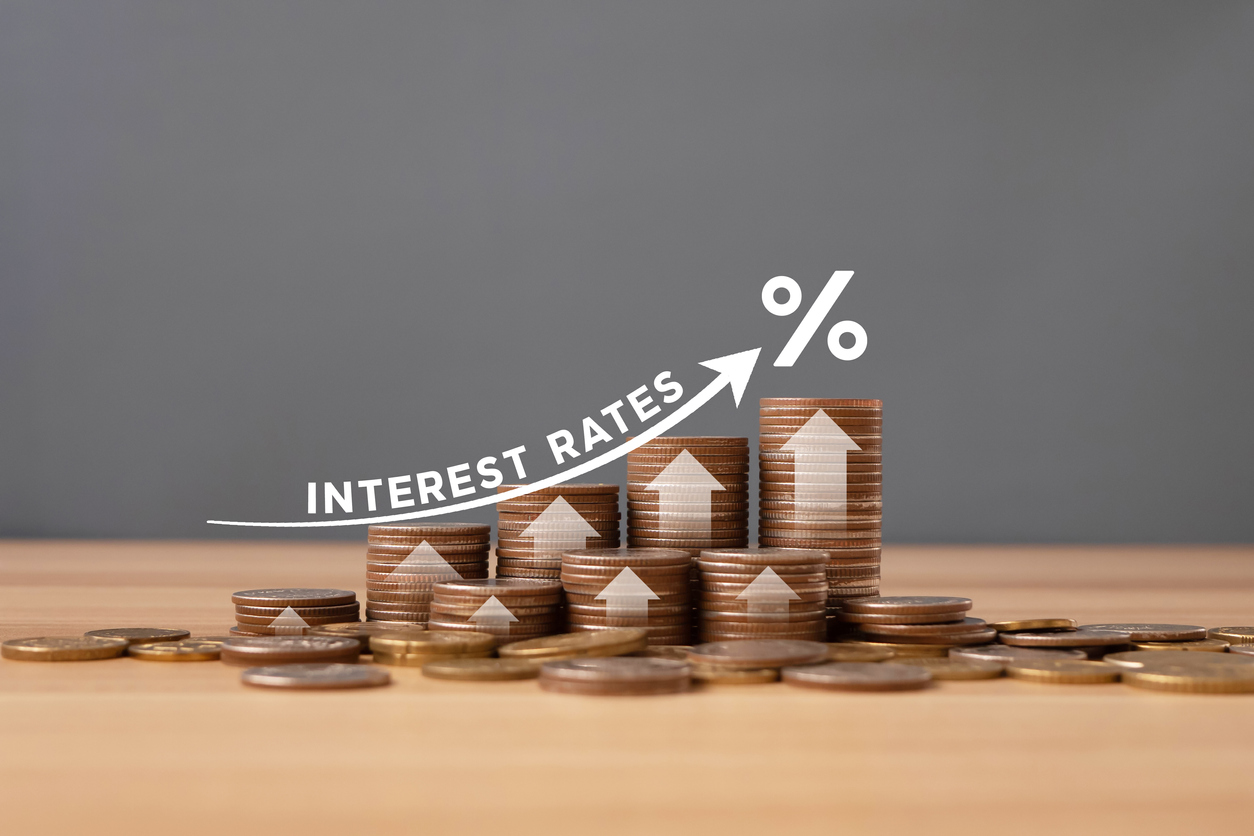Rising Interest Rates and Credit Costs: How Higher Borrowing Costs are Impacting U.S. Consumers
The U.S. economy is facing one of its most challenging financial landscapes in recent years, with rising interest rates and increasing credit costs at the forefront. As the Federal Reserve continues to adjust interest rates in an effort to combat inflation, the effects on consumer borrowing and spending are becoming more apparent. Higher interest rates impact everything from mortgages to credit cards, auto loans, and student debt, placing a heavier burden on households nationwide. This trend is altering spending habits, limiting disposable income, and creating financial stress, particularly for families with variable-rate debts.
Understanding the Federal Reserve’s Rate Hikes
The Federal Reserve (Fed) sets the benchmark interest rate, or federal funds rate, which influences the rates at which banks lend to each other. This rate also affects borrowing costs for consumers, as it determines the base rate for a range of consumer loans. When inflation began to rise sharply, driven by supply chain disruptions and increased consumer demand, the Fed responded with a series of rate hikes. The idea behind raising rates is to make borrowing more expensive, which in turn cools spending and helps slow inflation.
While the Fed’s goal is to bring inflation under control, these rate hikes have had unintended consequences for U.S. consumers, increasing the cost of credit and affecting the financial health of many households.
Impact on Mortgages and Housing Affordability
One of the areas most affected by rising interest rates is the housing market. Mortgage rates, which are closely tied to the federal funds rate, have increased significantly over the past year. The average rate for a 30-year fixed mortgage recently reached its highest level in decades, making homeownership less affordable for many prospective buyers.
Higher mortgage rates mean that monthly payments on new loans are considerably more expensive. For instance, a mortgage rate increase from 3% to 6% can add hundreds of dollars to the monthly payment on a typical home loan. This sharp rise has pushed many potential homebuyers out of the market and left others with fewer options, as they can no longer afford the same level of home they could just a few years ago.
For existing homeowners with adjustable-rate mortgages (ARMs), the impact can be even more severe. Unlike fixed-rate mortgages, ARMs have interest rates that adjust over time, typically in line with market rates. As the Fed’s rate hikes push interest rates higher, homeowners with ARMs are seeing their monthly payments increase as well. For many, these adjustments represent a substantial increase in housing costs, stretching budgets thin and forcing some households to reconsider their financial priorities.
Credit Card Debt: Rising Rates and Minimum Payments
Credit cards are another area where rising interest rates are having a significant impact. Most credit cards come with variable interest rates, meaning that the annual percentage rate (APR) can fluctuate based on changes in the federal funds rate. As the Fed raises rates, credit card interest rates tend to increase in response, making it more expensive for consumers to carry balances from month to month.
For consumers who don’t pay off their balance in full each month, rising interest rates mean higher minimum payments and longer payoff times. Even a small increase in the APR can result in a noticeable jump in monthly payments, which can make it harder for consumers to manage their debt effectively. For example, a credit card balance of $5,000 at an interest rate of 15% would take more than 13 years to pay off if only the minimum payment is made each month. If the rate rises to 20%, the payoff period extends further, adding hundreds or even thousands of dollars in interest charges over time.
This increase in credit card interest rates disproportionately affects households with lower incomes, who are more likely to carry balances and rely on credit cards for essential purchases. As monthly payments rise, these households may find it increasingly difficult to manage debt, leading to higher levels of financial stress.
Auto Loans and the Cost of Car Ownership
Auto loans are another area affected by rising interest rates. With the average interest rate on new auto loans increasing, monthly car payments are becoming more expensive, putting pressure on household budgets. For many Americans, owning a car is a necessity rather than a luxury, especially in areas where public transportation options are limited. However, the added cost of higher loan payments, combined with already high vehicle prices, is making car ownership less affordable.
For those with existing auto loans, rising rates may not have an immediate impact. However, for those in the market for a new vehicle or refinancing an existing loan, higher interest rates mean larger monthly payments and higher total interest costs over the life of the loan. This trend has already led to a slowdown in auto sales, as consumers delay or forgo purchases due to affordability concerns.
The impact is particularly challenging for households with lower credit scores, as they often face higher interest rates on auto loans. These consumers may find themselves unable to afford a reliable vehicle, which can limit job opportunities and increase transportation expenses, further straining their financial situation.
Student Loans: Implications of Higher Rates on Education Financing
Student loans represent a major financial burden for many Americans, and rising interest rates have implications for both new and existing borrowers. While federal student loan interest rates are fixed for the life of the loan, new federal loans issued each year carry interest rates that reflect the broader market environment. For private student loans, which often come with variable interest rates, borrowers may see their rates and monthly payments increase in response to the Fed’s actions.
For students and recent graduates, higher interest rates mean that the cost of borrowing for education is rising, adding to the long-term burden of student debt. As graduates enter the workforce, they may find themselves with less disposable income to allocate toward savings, investments, or other financial goals, as a larger portion of their earnings goes toward repaying student loans.
Higher interest rates also impact those looking to refinance existing student loans. While refinancing can be a way to secure a lower interest rate and reduce monthly payments, the current rate environment has made it difficult for borrowers to find favorable terms. As a result, many borrowers are unable to take advantage of refinancing opportunities, which limits their ability to reduce debt more efficiently.
The Ripple Effect: Reduced Consumer Spending and Economic Impacts
As interest rates rise and credit costs increase, the ripple effect on consumer spending is becoming more apparent. With more income allocated toward debt payments, households have less discretionary income to spend on nonessential goods and services. This reduction in spending can have broader economic impacts, particularly for industries that rely on consumer purchases, such as retail, dining, and entertainment.
Reduced consumer spending also affects small businesses, which may experience slower sales growth as customers cut back on discretionary purchases. In response, some businesses may delay hiring or limit expansions, which can have a negative impact on job creation and economic growth.
For the economy as a whole, the combination of higher debt costs and reduced consumer spending creates a cycle that can be challenging to break. As households reduce spending, businesses may see lower revenues, leading to reduced investment and potential job losses. This, in turn, can further reduce consumer spending, creating a feedback loop that can slow economic recovery.
Strategies for Managing Rising Credit Costs
In light of rising interest rates, consumers can take several steps to manage their finances more effectively and reduce the impact of higher credit costs. Some strategies include:
- Paying Down Debt: Reducing outstanding debt balances can help mitigate the effects of rising interest rates. By focusing on paying off high-interest debt, such as credit cards, consumers can reduce their monthly payments and limit the total amount of interest paid over time.
- Refinancing Fixed-Rate Loans: While refinancing may be challenging in a high-interest-rate environment, consumers with good credit may still find opportunities to refinance fixed-rate loans, such as mortgages, to secure a lower rate.
- Building an Emergency Fund: Having a financial cushion can help households avoid relying on high-interest credit cards during times of financial stress. Building an emergency fund can provide a buffer against unexpected expenses and reduce the need for costly borrowing.
- Limiting Variable-Rate Debt: Consumers should consider avoiding new variable-rate loans, which are more likely to increase in cost as interest rates rise. Instead, opting for fixed-rate loans can provide greater stability and predictability in monthly payments.
- Creating a Budget: Tracking expenses and creating a budget can help households identify areas where they can cut back on discretionary spending. By managing cash flow more effectively, consumers can allocate more income toward debt repayment and savings.
Looking Ahead: The Future of Interest Rates and Consumer Credit
The outlook for interest rates remains uncertain, as the Federal Reserve continues to assess economic conditions and inflationary pressures. While some experts predict that rates may stabilize or even decrease in the coming years, others caution that inflation may require sustained rate hikes to bring under control. For consumers, this uncertainty underscores the importance of taking proactive steps to manage debt and build financial resilience.
The rising cost of credit presents a challenge for many American households, impacting their ability to buy homes, cars, and other essential goods. By understanding the factors driving these changes and adopting strategies to mitigate the effects, consumers can better navigate this challenging financial environment. As the economy adjusts to higher interest rates, the resilience and adaptability of American consumers will play a critical role in shaping the path forward.
TOP 7 Current Financial Issues Facing U.S. Consumers












